The Fun And History Of Jigsaw Puzzles
Jigsaw puzzles have been around to entertain the masses long before the rise of the Internet. As early as 1760, this popular and beneficial entertainment appeared almost simultaneously in France and Britain. A picture was glued to a cardboard and then cut into irregular small pieces. Initially, these pictures were educational, accompanied by short articles suitable for young people to read or taught history or geography to the emerging bourgeoisie.
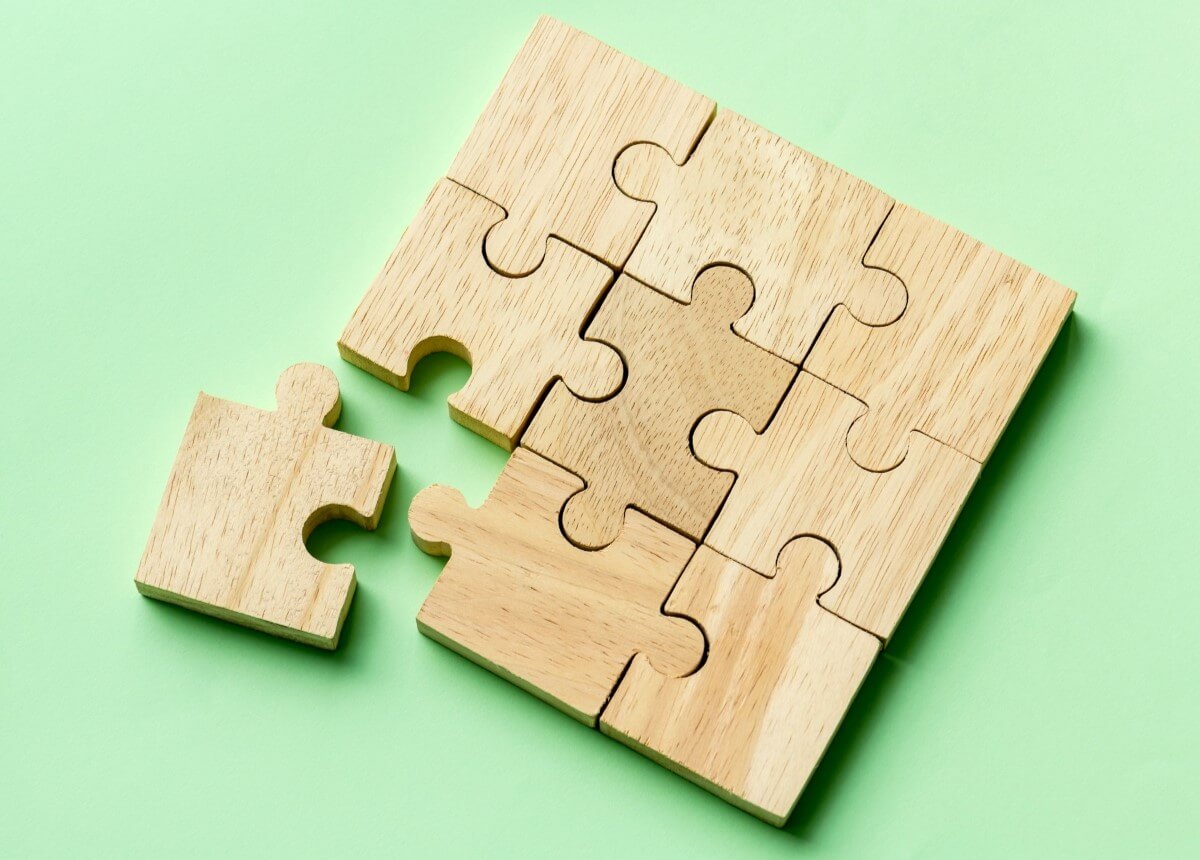
The First Jigsaw Puzzle
However, jigsaw puzzles were not accepted by the public until 1766, when a man named John Spilsbury invented the first jigsaw puzzle as a teaching tool for geography. He attached the world map to a wooden board and then carved each country out of the board to make a puzzle. This jigsaw puzzle was called "Dissected Maps".
Spilsbury lived in an era when being able to read maps was considered a sign of gentlemanliness. The popularity of jigsaw puzzles reached its peak during the Grand Tour, a huge event that presented a detailed picture of Europe. In this sense, jigsaw puzzles were a careful study of the geography of Europe - countries, principalities, counties, cities, towns, rivers, and so on - using jigsaw puzzle pieces.
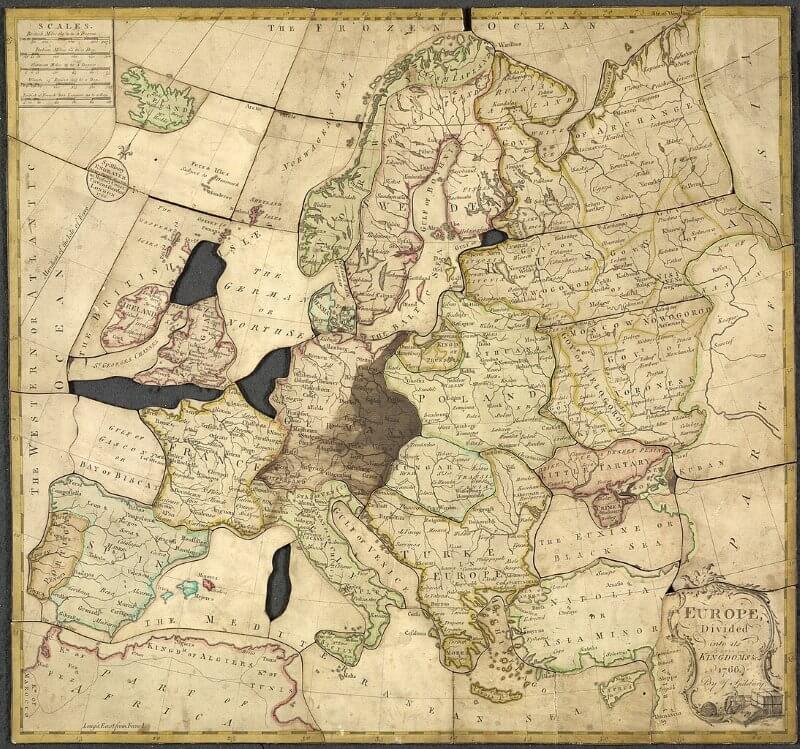
Of course, not everyone is so positive about jigsaw puzzles. Conservatives and social critics alike scoff at the idea of rich people being too bored to do anything but spread a pile of cardboard pieces out on a table. A dozen years later, puzzle makers began to add historical themes to their puzzles. In 1787, an Englishman named William Dutton created a set of portrait puzzles of the kings of England, from William the Conqueror to George III. Education and memory were also part of the fun, because to successfully arrange all the pieces, you had to know the correct order of these kings. However, at that time, puzzles were only a game for the rich and were not popular. Hand-painted, hand-colored, and hand-cut, the price of the puzzle was very expensive, equivalent to a month's salary for an ordinary worker.
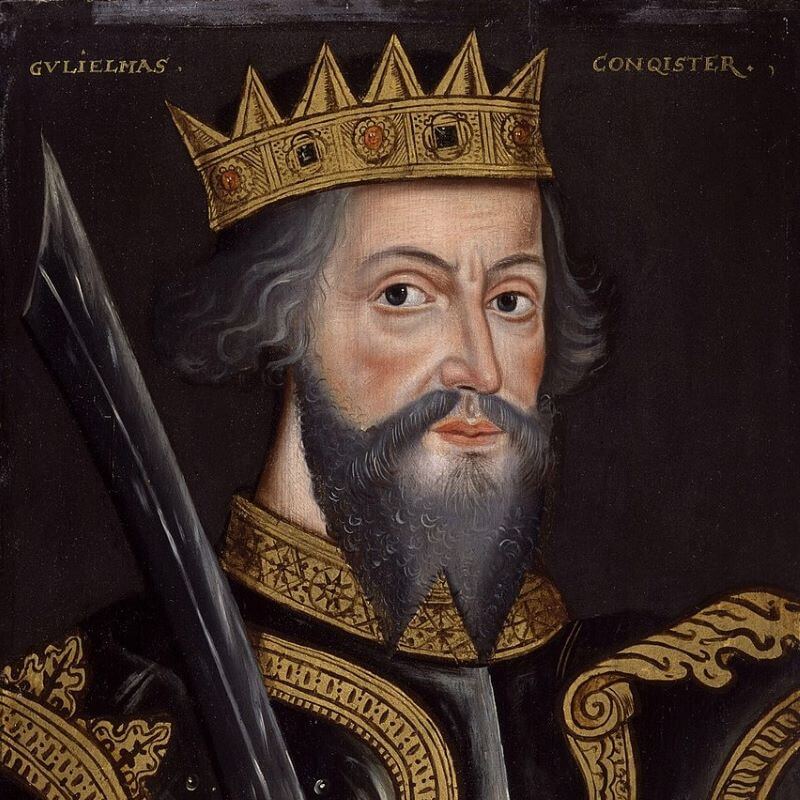
Jigsaw Puzzle Modernization
The French Revolution of 1789 ushered in the dawn of modern Europe, and the contemporary jigsaw puzzle was born at the hands of John Wallis. This imaginative Englishman invented the brightly colored landscape jigsaw puzzle. The new puzzle required more concentration and patience to complete. It marked the end of the era of the beautifully crafted but expensive Spilsbury puzzle. Wallis's reproduction skills soon made his new puzzle the model for the developing trade based on his original printing plates.
By the early 19th century, new industrial techniques for mass production had given jigsaw puzzles a definite form. Previously, large, cumbersome puzzles consisted of smooth-edged pieces arranged in rows that could be pulled apart with the slightest vibration. Around 1840, German and French jigsaw manufacturers used interlocking snap-joining machines to cut puzzle pieces, a format familiar to modern jigsaw puzzle fans. They drastically reduced costs by replacing thin hardwood sheets with softwood, plywood, and cardboard. Eventually, inexpensive jigsaw puzzles were adopted by consumers of all classes, and soon a jigsaw craze spread among children, adults, and the elderly.
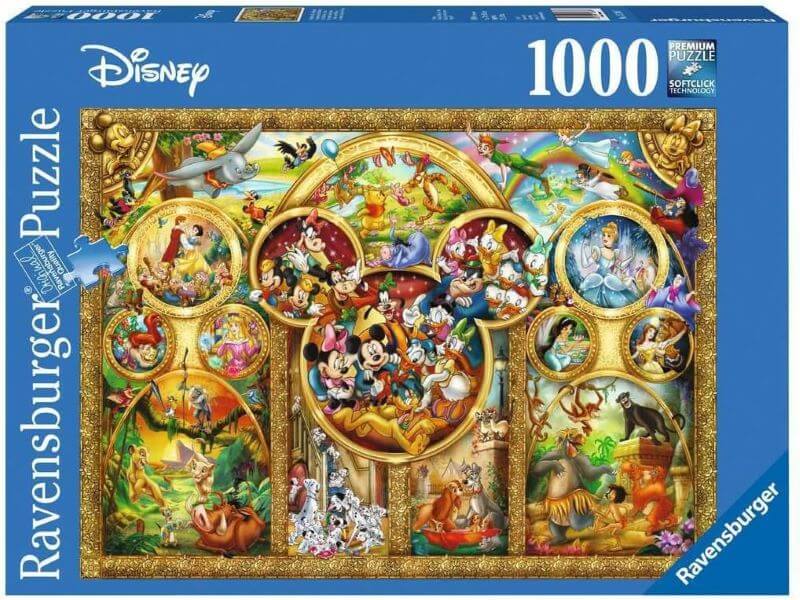
Puzzles quickly became a mature, mass-market entertainment product that consumers could buy anywhere. Puzzles were now used not only for education and entertainment, but also for commercial advertising and political propaganda. World War I (1914-1918) is a good example. Cheap puzzles depicting brave soldiers fighting for their king and country were popular and sold well on both sides of the war. Puzzles became a way to get close to people's inner worlds, into homes, and spread information. Puzzles became a simple and direct form of mass communication, along with newspapers, radio, and the first generation of television. Should people be encouraged to travel by train? Many puzzles were created showing majestic trains and happy travelers. Every new invention and trend - steamboats, airplanes, cars, and the latest and most daring women's bathing suits - has appeared in puzzles.
Even during the Great Depression in North America, people were still willing to pay 25 cents for a jigsaw puzzle with 300 pieces. "You can forget your hard life and immerse yourself in the dream of piecing together a happy day."
Today's Jigsaw Puzzle
Modern puzzles are mostly made of cardboard, which is cheaper and simpler. The puzzle pattern is a whole art print that is pasted on the cardboard surface before cutting. The content of the picture can be an enlarged photograph, painting, or other graphic art.
Jigsaw puzzles come in a variety of sizes. Jigsaw puzzles marketed to children usually have far fewer pieces and are often large, often only 4 to 9 large pieces (to avoid being a choking hazard). They are often made of wood or plastic for durability and cleanability. Among puzzles marketed to adults, 300, 500, and 750-piece puzzles are considered "smaller." More complex but common puzzle sizes are 1000, 1500, 2000, 3000, 4000, and 5000 pieces.
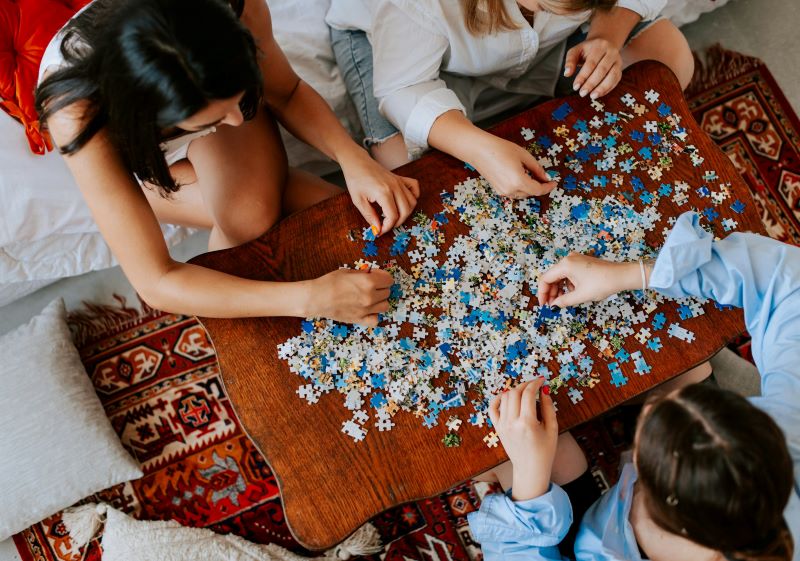
Modern jigsaw puzzles come in many variations, including single-sided, double-sided, three-dimensional, spherical, and online puzzles.
People rediscovered the joy of jigsaw puzzles during the COVID-19 stay-at-home order, and jigsaw competitions have made jigsaw puzzles popular again.
Looking for your next puzzling challenge? Try our online jigsaw puzzle games.